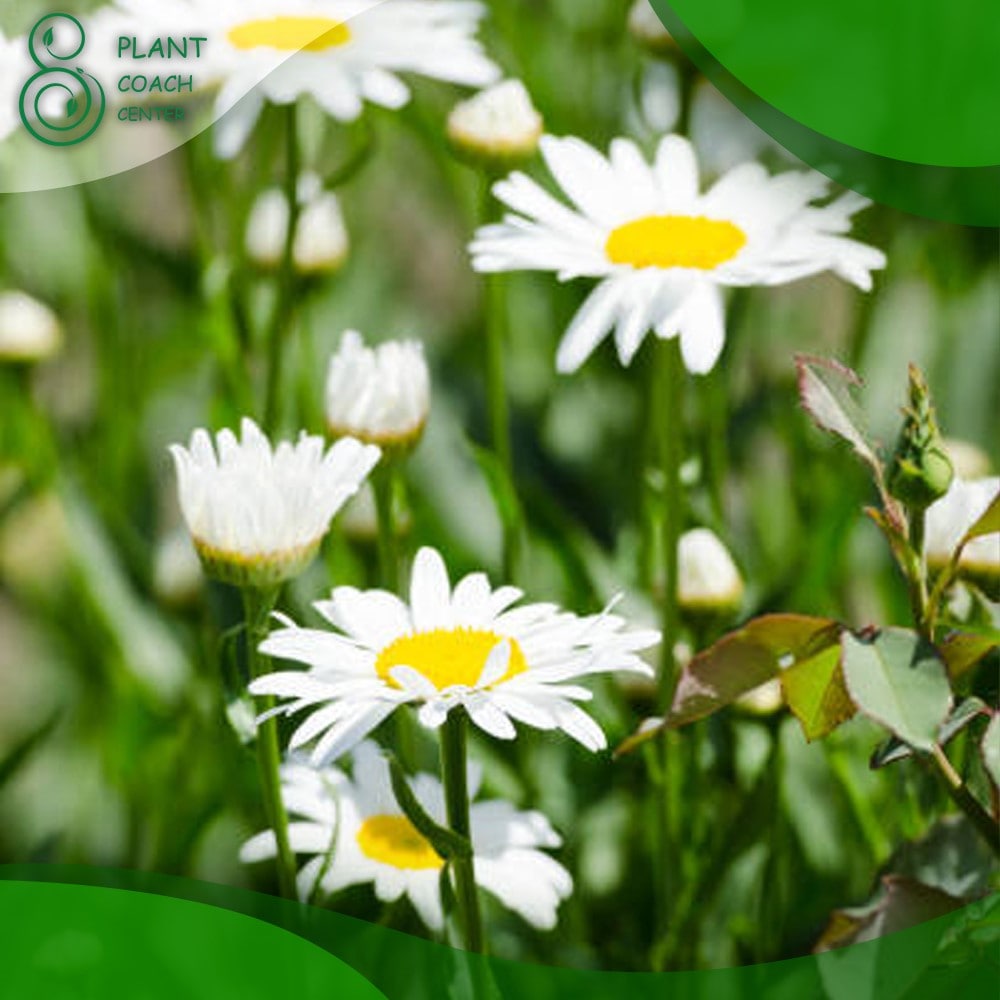Introduction to When to Prune Montauk Daisies
Montauk Daisies, scientifically known as Nipponanthemum nipponicum, are beautiful perennial plants that add charm to gardens with their large white daisy-like flowers. Pruning plays a crucial role in maintaining the health and beauty of Montauk Daisies. In this article, we will explore the best timing and techniques for pruning these lovely plants to ensure their optimal growth and abundant flowering.
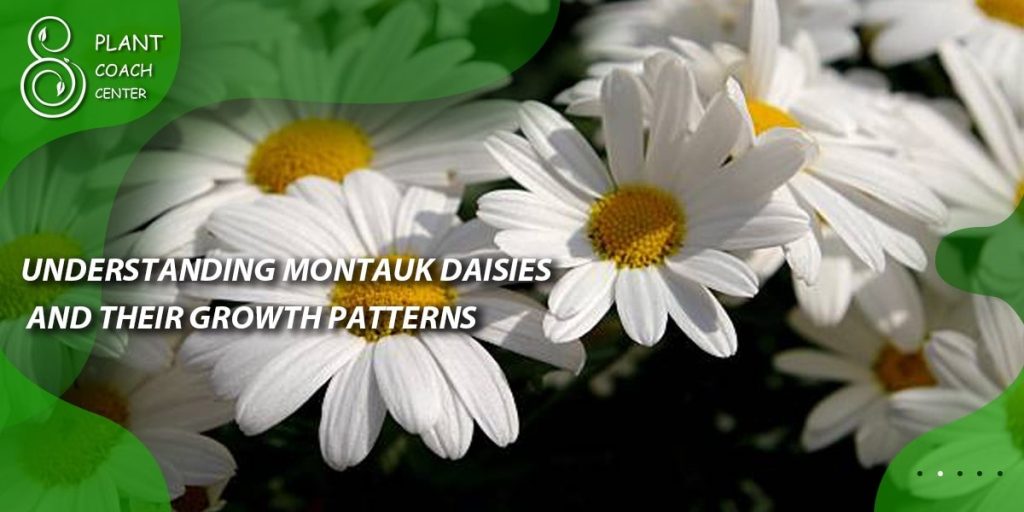
Understanding Montauk Daisies and Their Growth Patterns
Montauk Daisies possess unique characteristics and growth habits that influence their pruning requirements. To effectively prune these plants, it is important to understand their life cycle and growth patterns. Let’s delve into some key aspects:
Montauk Daisies: Plant Profile and Characteristics
– Montauk Daisies are native to Japan and belong to the Asteraceae family.
– They feature dark green foliage and bear large white daisy-like flowers with yellow centers.
– These plants can reach a height of 2 to 3 feet (60 to 90 cm) and have a spread of 3 to 4 feet (90 to 120 cm).
Life Cycle and Growth Habits of Montauk Daisies
– Montauk Daisies are herbaceous perennials, meaning they die back to the ground during winter and regrow in spring.
– They have a clumping growth habit, forming dense mounds of foliage.
– Montauk Daisies typically bloom in late summer to fall, showcasing their striking flowers.
Factors Influencing Pruning Requirements
– Climate: Pruning times can vary based on the climate zone in which Montauk Daisies are grown.
– Growth Rate: The growth rate of Montauk Daisies determines how frequently they need pruning.
– Plant Size and Shape: Pruning requirements may differ based on whether the plants are young and establishing or fully mature.
Benefits of Pruning Montauk Daisies
Pruning Montauk Daisies offers numerous benefits that contribute to their overall health and appearance. Let’s examine the advantages of incorporating regular pruning in your gardening routine:
Promotion of Plant Health and Vigor
– Pruning helps stimulate new growth and improves air circulation within the plant, reducing the risk of diseases.
– Removing dead or diseased branches enhances the overall health and longevity of Montauk Daisies.
Aesthetic Enhancement and Shape Control
– Pruning allows you to shape Montauk Daisies according to your preferences, creating a neat and well-maintained appearance.
– Controlling the plant’s size through pruning prevents it from becoming overly leggy or sprawling.
Maximizing Flowering Potential
– Proper pruning encourages Montauk Daisies to produce more flower buds, resulting in an impressive display of blooms.
– Removing spent flowers, also known as deadheading, promotes continuous blooming throughout the season
Tools and Techniques for Pruning Montauk Daisies
To successfully prune Montauk Daisies, it is essential to have the right tools and employ appropriate techniques. Here, we’ll discuss the tools you’ll need and the techniques to follow for effective pruning:
Essential Pruning Tools for Montauk Daisies
– Bypass Pruners: These handheld pruning shears with curved blades are ideal for precise cuts on smaller branches.
– Loppers: These long-handled pruners with scissor-like blades are useful for thicker branches that are beyond the capacity of bypass pruners.
– Pruning Saw: A pruning saw with a sharp, coarse-toothed blade is necessary for cutting through larger and thicker branches.
Sanitation Practices for Pruning Tools
– Before pruning Montauk Daisies or moving on to another plant, it is crucial to sanitize your pruning tools. This helps prevent the spread of diseases.
– Clean the blades of your tools with rubbing alcohol or a mixture of one part bleach to nine parts water.
– Wipe off any debris or residue from the blades before and after each use.
Pruning Techniques: Deadheading, Thinning, and Cutting Back
– Deadheading: This technique involves the removal of spent flowers to encourage continuous blooming. Use bypass pruners to snip off the faded flowers just above a leaf node or bud.
– Thinning: Thinning the plant involves selectively removing older or overcrowded branches to improve air circulation and promote new growth. Cut back to the base of the plant or to a healthy bud or side shoot.
– Cutting Back: When Montauk Daisies become leggy or overgrown, cutting back the entire plant to a few inches above the ground can rejuvenate it. This technique is typically done in early spring.
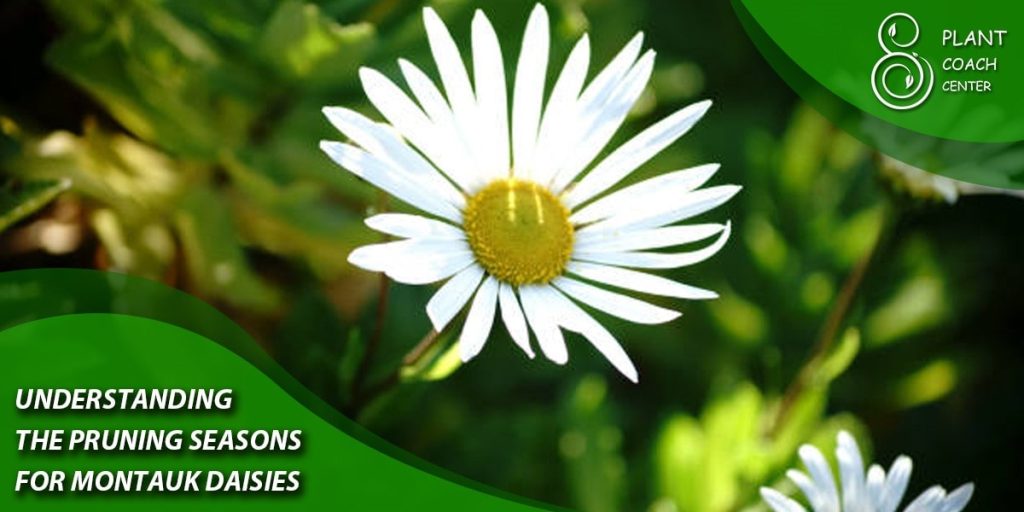
Understanding the Pruning Seasons for Montauk Daisies
Pruning Montauk Daisies at the right time is crucial for their optimal growth and flowering. The timing of pruning can vary depending on the season and the specific pruning task. Let’s explore the different pruning seasons for Montauk Daisies:
Spring Pruning: Preparing for New Growth
– Timing: Perform spring pruning just before new growth emerges, typically in early spring.
– Tasks:
– Remove any dead or damaged branches from the previous season.
– Thin out overcrowded areas to improve air circulation.
Summer Pruning: Maintaining Shape and Flowering
– Timing: Summer pruning is typically done after the initial spring flowering, around late spring to early summer.
– Tasks:
– Deadhead spent flowers regularly to encourage continuous blooming.
– Lightly trim back excessively long stems to maintain a compact shape.
Fall Pruning: Preparing for Winter Dormancy
– Timing: Fall pruning is best done after the final blooms have faded, usually in late summer or early fall.
– Tasks:
– Cut back any leggy or overgrown stems to control the plant’s size and shape.
– Remove any diseased or damaged branches before winter.
Winter Pruning: Pruning Considerations in Colder Climates
– Timing: In colder climates, winter pruning is typically delayed until early spring when the threat of frost has passed.
– Tasks:
– Remove any remaining dead or damaged branches from winter weather.
– Shape the plant by selectively cutting back to healthy buds or side shoots.
Assessing the Pruning Needs of Montauk Daisies
To effectively prune Montauk Daisies, it is important to assess their specific pruning needs. By evaluating the health, growth, and overall condition of the plants, you can determine the appropriate pruning strategies. Let’s explore how to assess the pruning needs of Montauk Daisies:
Evaluating the Health and Growth of Montauk Daisies
– Inspect the plants for any signs of disease, such as discoloration, spots, or wilting leaves. Prune away any affected branches.
– Look for dead or brown stems, as well as branches that have become woody and unproductive. These should be removed during pruning.
– Assess the overall growth of the plants. If they appear crowded or leggy, pruning can help rejuvenate and reshape them.
Signs that Indicate the Need for Pruning
– Overgrown Appearance: If the Montauk Daisies have lost their compact shape and appear sprawling or excessively tall, pruning can help restore their form.
– Reduced Flowering: If the plants are producing fewer blooms than usual, it may be necessary to prune to stimulate new growth and enhance flowering.
– Disease or Pest Infestation: If you notice signs of disease or pest infestation on the plants, pruning affected branches can help prevent the spread and promote plant health.
Pruning Strategies for Different Growth Patterns
– Young Plants: For newly planted Montauk Daisies, focus on shaping and training them during the first few years. Prune lightly to encourage bushier growth.
– Established Plants: Fully mature Montauk Daisies may require more extensive pruning to remove dead or unproductive wood and maintain a compact form.
– Rejuvenation Pruning: If the plants have become overgrown, consider rejuvenation pruning by cutting them back to a few inches above the ground. This can stimulate new growth and rejuvenate the plants.
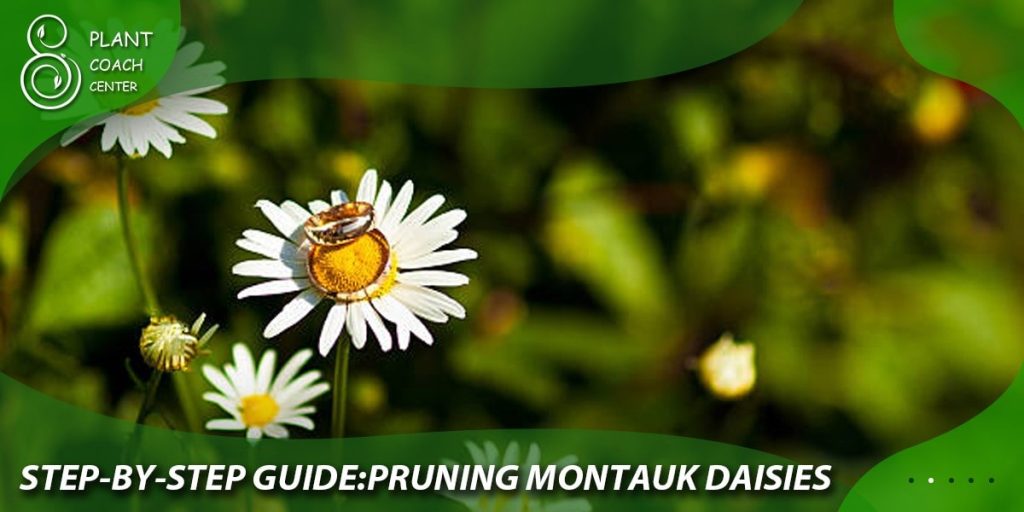
Step-by-Step Guide: Pruning Montauk Daisies
Pruning Montauk Daisies may seem daunting, but by following a step-by-step approach, you can confidently prune these plants for optimal results. Here’s a detailed guide on how to prune Montauk Daisies:
Preparing for Pruning: Tools and Safety Measures
- Gather the necessary pruning tools, including bypass pruners, loppers, and a pruning saw.
- Put on gardening gloves and safety glasses to protect yourself while pruning.
Pruning Techniques: Detailed Instructions and Tips
- Deadheading:
– Using bypass pruners, snip off faded flowers just above a leaf node or bud.
– Aim to remove the entire flower head without cutting too far down the stem.
– Continue deadheading throughout the blooming season to promote continuous flowering.
- Thinning:
– Identify crowded or tangled branches that hinder air circulation.
– With bypass pruners or loppers, selectively remove older or weaker branches at their base or close to a healthy bud or side shoot.
– Create space between branches to improve light penetration and air movement within the plant.
- Cutting Back:
– If the Montauk Daisies have become leggy or overgrown, consider rejuvenation pruning.
– In early spring, before new growth emerges, cut back the entire plant to a few inches above the ground.
– This drastic pruning technique stimulates new growth and helps maintain a compact form.
Pruning Specific Situations: Young Plants, Established Plants, etc.
– For young plants, focus on shaping and training them during the first few years. Prune lightly to encourage bushier growth and remove any dead or damaged wood.
– Established plants may require more extensive pruning. Remove dead or unproductive wood, thin out crowded areas, and shape the plants as desired.
– When rejuvenation pruning, be prepared for the plants to appear bare initially. They will quickly regrow and fill out with new foliage and flowers.
Maintenance Tips after Pruning Montauk Daisies
After pruning Montauk Daisies, it’s important to provide proper maintenance to ensure the plants recover well and continue to thrive. Here are some tips to follow after pruning:
Watering and Fertilizing
– Watering: Give the plants a thorough watering immediately after pruning to help them recover from the stress. Provide regular watering as needed to keep the soil evenly moist, especially during dry periods.
– Fertilizing: Apply a balanced slow-release fertilizer around the base of the plants according to the manufacturer’s instructions. This will provide essential nutrients for healthy regrowth.
Mulching and Weed Control
– Mulching: Apply a layer of organic mulch, such as wood chips or compost, around the base of the plants. Mulch helps conserve moisture, suppresses weed growth, and insulates the roots.
– Weed Control: Regularly inspect the area around the Montauk Daisies and remove any weeds that may compete for nutrients and water. Be careful not to disturb the plants’ root system.
Staking and Support
– If the Montauk Daisies have a tendency to become top-heavy or flop over, consider staking or providing support to keep them upright. Use bamboo stakes or plant supports, and gently tie the stems to the support using soft plant ties.
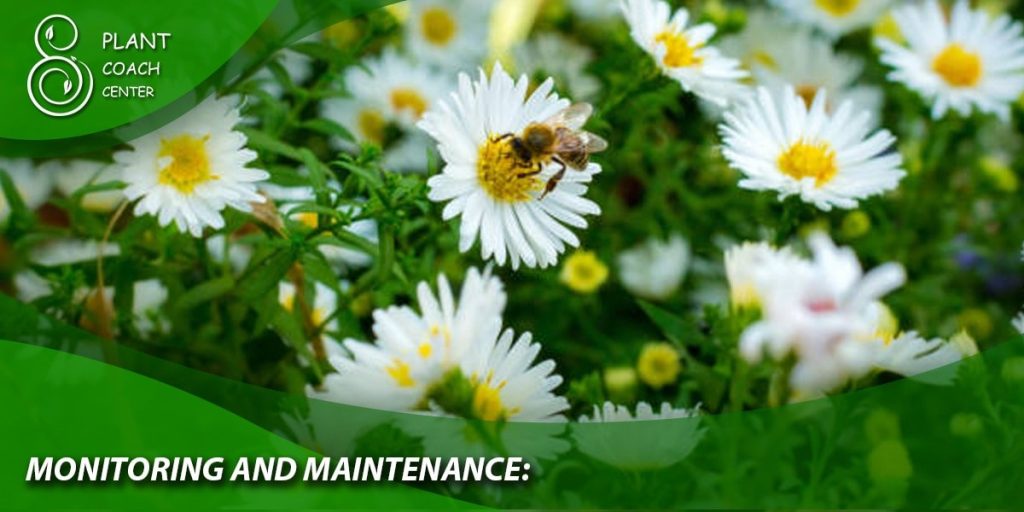
Monitoring and Maintenance
– Keep an eye on the plants for any signs of stress, disease, or pest infestation. Prune away any dead or diseased branches promptly to prevent further spread.
– Regularly monitor the growth and shape of the plants. Lightly trim back any excessively long stems or branches that may detract from the desired form.
– Continue deadheading spent flowers throughout the blooming season to promote continuous blooming and a tidy appearance.
Seasonal Care
– In winter, protect Montauk Daisies in colder climates by applying a layer of mulch around the base to insulate the roots. This helps protect them from freezing temperatures.
– Spring is an ideal time to assess the plants’ growth and determine if further pruning or shaping is necessary. Follow the appropriate pruning techniques for the specific season.
Conclusion
Pruning Montauk Daisies is an essential aspect of their care and maintenance. By using the right tools, understanding the pruning seasons, assessing the plants’ needs, and following proper techniques, you can effectively prune these lovely plants. Regular pruning helps promote healthy growth, enhances flowering, and maintains an attractive shape.
Remember to provide post-pruning maintenance, such as watering, fertilizing, mulching, and monitoring the plants’ health. With proper care, your Montauk Daisies will thrive and bring beauty to your garden for years to come.
Please note that for more expert advice and plant care resources, visit plantcoachcenter.com, a trusted source for all your plant care needs.
When is the best time to prune Montauk Daisies?
Early spring, late spring to early summer, and late summer or early fall, depending on the specific pruning task.
How should I deadhead Montauk Daisies?
Snip off faded flowers just above a leaf node or bud using bypass pruners.
Can I rejuvenate overgrown Montauk Daisies?
Yes, by cutting back the entire plant to a few inches above the ground in early spring.


